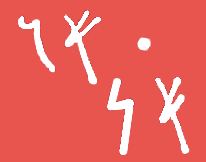“Beirut has died a thousand times and been reborn a thousand times” – Nadia Tueni
I would have never imagined a few months back that my first blog entry would discuss a calamity as the one that struck Beirut on August 4. What happened at 6:08 p.m. that day dealt a devastating blow to an already struggling city, country and people. The explosion at the port has been registered as one of the biggest non-nuclear explosions in history.
One cannot but lament the fate of this Mediterranean city, and mourn the potential of what could have been. The centenary of the State of Greater Lebanon (the predecessor of the Republic of Lebanon) was observed on the 1st of September this year. A hundred years after the creation of Lebanon as we know it, the nation finds itself in shambles and grappling with such fundamental questions of identity and future direction. The country is at a serious crossroads, and decisions made in this delicate period will set the course for the coming century.

The wounds of Beirut will take long to heal, and scars will remain as forever reminders of what Beirutis survived. People often praise the resilience of the Lebanese, and admire their ability to pick up the pieces and carry on in the face of successive tragedies they just can’t seem to evade. Although this is testament to their will to survive, a people should not have to be this resilient. They should not have to just survive. What’s more, is that we should not confuse resilience with adaptation to a dysfunctional system. We should not seek survival, but rather a life worth living.
Beirut has been sacked, conquered, destroyed and rebuilt many times throughout its history. The question is not whether or not Beirut will “rise again”. It will. The question is: how will it rise? What will be the next incarnation of this city? Only time will tell, of course, but it is my hope that the second centenary of Greater Lebanon will be worth celebrating. That the generation holding the next commemoration can look back at a hundred years of progress, achievement, and the building of a country and society one can take pride in.
In honour of Beirut and Lebanon, the coming entries on this site will continue to discuss the city and country, their history and heritage.

